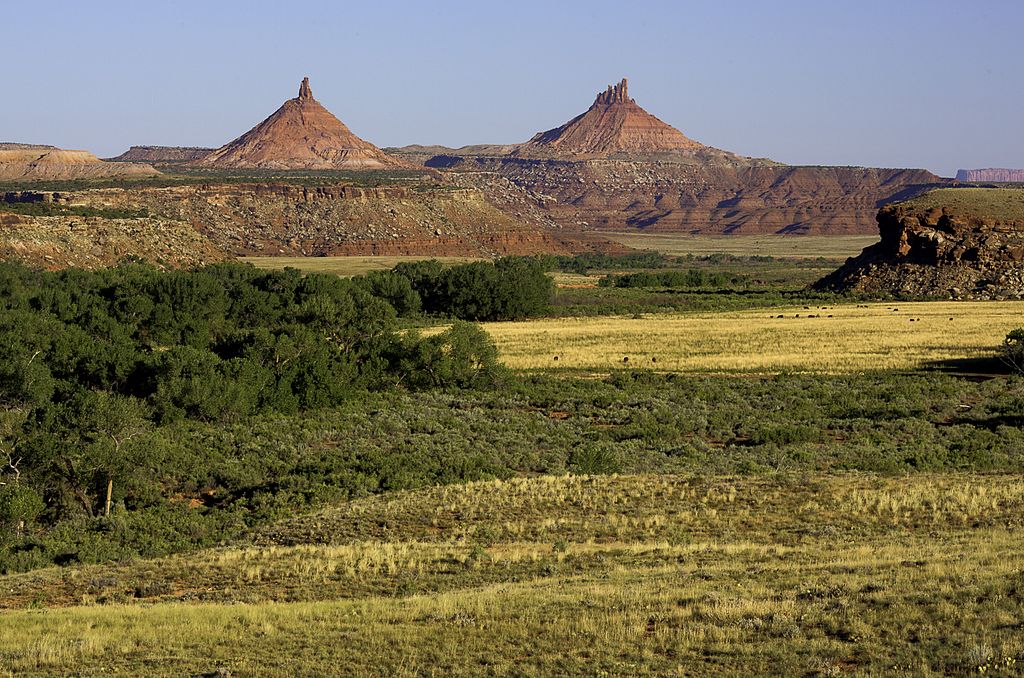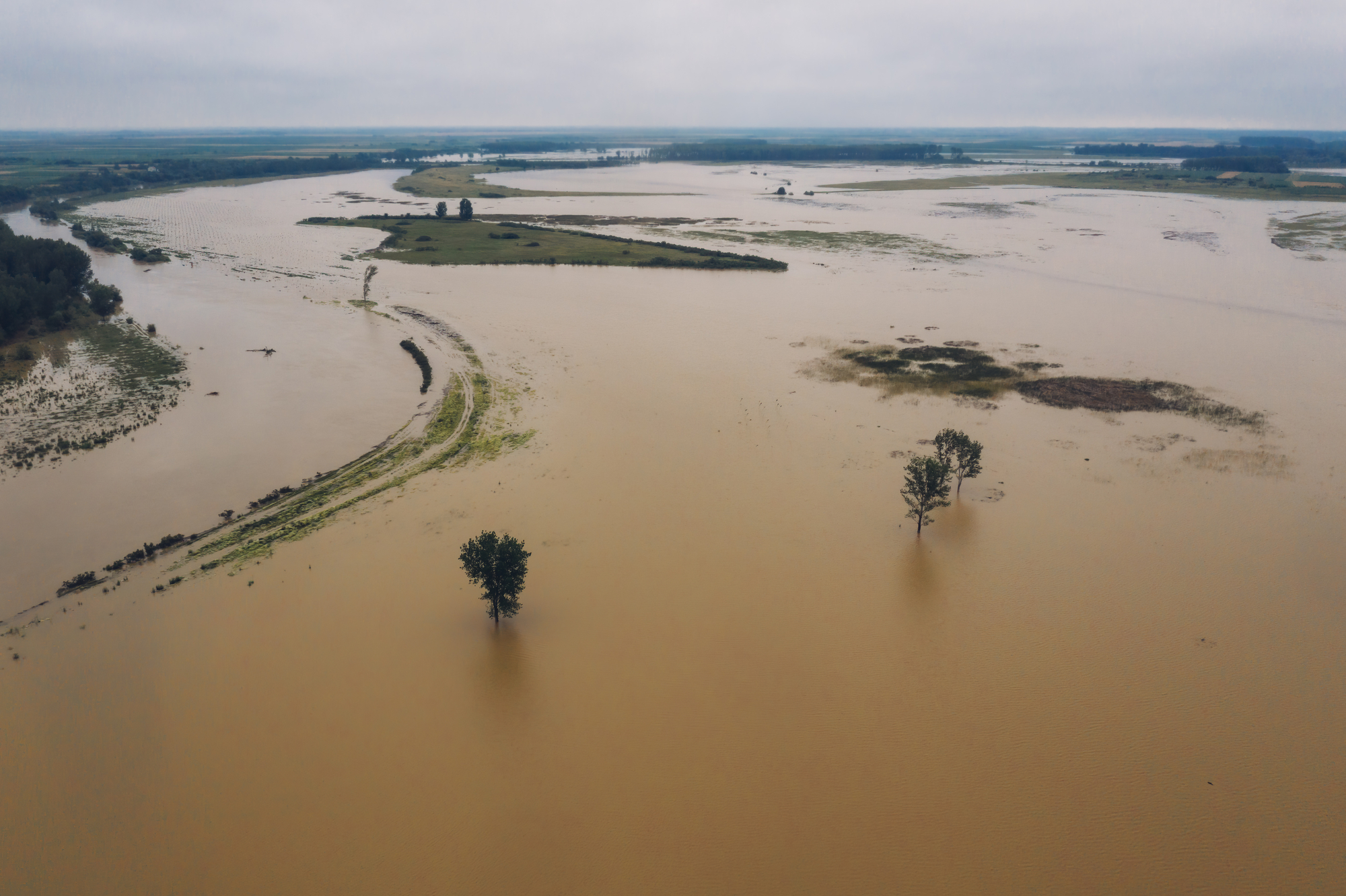In the Fight for Bears Ears National Monument, A Clash of Environmental Worldviews
During a visit to Utah on December 4, President Trump announced that he would scale back Bear Ears and Grand Staircase National Monuments, designating the federal land available for private sale. In what Republicans hail as Trump “listening to local people” and freeing land from “restrictive monument designation,” this is seen by many to be the first time since the Antiquities Act of 1906 that a president has attempted to reverse the preservation of federal land. According to the National Park Service, past presidents have redrawn boundaries of existing parks 18 times, but this move by President Trump has been met with strong civic and legal resistance.
The president is not proposing a small change by any means: 85 percent of Bear Ears and nearly half of Grand Staircase would no longer be public federal land. This would make the land available for sale to private businesses, which could extract resources from the land or manage visitation with fewer cost and environmental restrictions.
Bear Ears was established by then-President Obama “at the behest of Native American tribes, who have long considered the landscape sacred and who continue to gather herbs and medicine from the land.” The current Secretary of the Interior, Ryan Zinke, has discussed decreasing the designated land in the area, specifically the Grand Staircase National Monument, citing the “coal and oil deposits as well as concerns of local ranchers.”
Outdoor clothing and gear company Patagonia, along with local Native American tribes and conservation organizations, are suing the president, considering the proclamation to lack legal weight. With so many legal battles playing out, the mining and “resource extraction” that the president considers a beneficial boost for the economy will likely be on hold for the time being. However, in the meantime, Utah Representation Rob Bishop, who is chairman of the House Natural Resources Committee, has introduced a bill that would limit the size of monuments the president could designate and give state and local officials power to veto monuments that are 10,000 acres or more. This bill would have a great deal of effect, for the interest in protecting land has varied between the state level and at the department of the Interior or federal level. One of the concerns with granting a legal power to undo federal protection would be with giving public land over to state interests. According to the CEO of Patagonia, “We must also acknowledge that history shows when states control public-trust land, 70% is sold off — and then often used for oil drilling, mining and other industrial activities.”
The underlying commitment of the Trump administration seems to be that the federal government shouldn’t be investing too heavily in environmental concerns. Speaking in favor of privatization of public grounds, the Secretary of the Interior said he “doesn’t want to be in the business of running campgrounds.” So what value is under debate in the discussion of whether the government should be involved in designating and regulated public land? One answer is as a way of protecting something of value against market forces, which would extract resources (destroy biomes) and inhibit the possibility of citizens personally enjoying (because of lack of regulation in privately owned, less regulated hotels, etc.). The federal government’s interest here is thus in protecting something of value, and we can understand this value in different ways that may affect the appropriate manner government should intervene.
In environmental ethics, questions center on the value of the non-human environment – why we value things like natural parks and monuments. On the one hand, anthropocentric views focus on the value of humans and human ways of life, with the non-human world (canyons, wolves, trees, and fish) only having value insofar as they relate to humans. Alternatively, one could claim that non-human aspects of the natural world have worth and value independently of how they relate to humans or humanity. Such views would claim, for instance, that non-human animals should be treated with respect, not because it means we can have better and more fulfilling relationships with them, but because they deserve it. Further, these views can claim that biomes, natural features like canyons, and organisms like trees and coral have value, whether we have appreciation for them or not.
Non-anthropocentric views would have an easier time motivating protecting land in parks and monuments, perhaps, because they may see the organisms and biomes there as having intrinsic (non-instrumental) value. Anthropomorphic views would require a justification for protecting such biospheres that related to their worth to humans, but would have an easier time motivating the maintenance of egalitarian access to the parks.
There is an approach to understanding the value of our ecological world that falls between these two approaches: a Norwegian-originated “deep ecology movement” that encourages the view that humans are not separate from the rest of the environment, but rather are integrated and interdependent with the biomes and organisms we encounter. The central metaphor of deep ecology is of knots on a biospherical net, where organisms are knots that are connected and non-hierarchical, as opposed to the independence and primacy of humanity on the anthropocentric view.
As developed by Arne Næss and others, the deep ecologist view suggests that individuals loosen the distinction we often have between ourselves and the natural world around us, as this will increase well-being and authenticity. The divide between human life and the rest of nature is detrimental to a fulfilling life, and the more we can do to engage with and acknowledge our place in the biosphere, the better we will be. Such a view would naturally encourage the preservation of natural lands, and further encourage maintaining access to the land so that citizens from all walks of life can enjoy it.
Our national parks have met with controversy over their potentially elitist nature (of the interest of setting them up, or of the access to them) and because the act of setting aside land is a restriction on the progress of industrialization, which tends to be a lucrative progress.
One of the claims made by both sides of the debate over the federal designation of public land and the legality of Trump’s proclamation is that is it important to ensure that all, or at the very least most, Americans can afford to visit the land designated and protected as public parks. The economic realities of different mechanisms are, no doubt, complicated, but it is hard to ignore that those suing Trump are trying to maintain protected land, while Trump’s Department of the Interior is on a path to diminish it.





